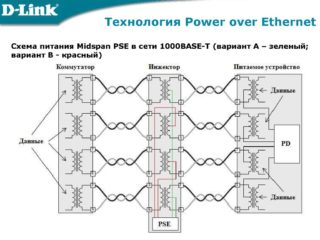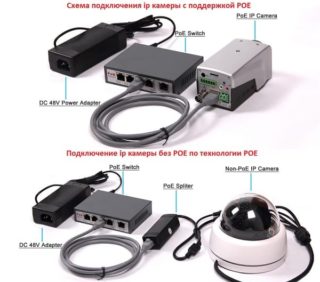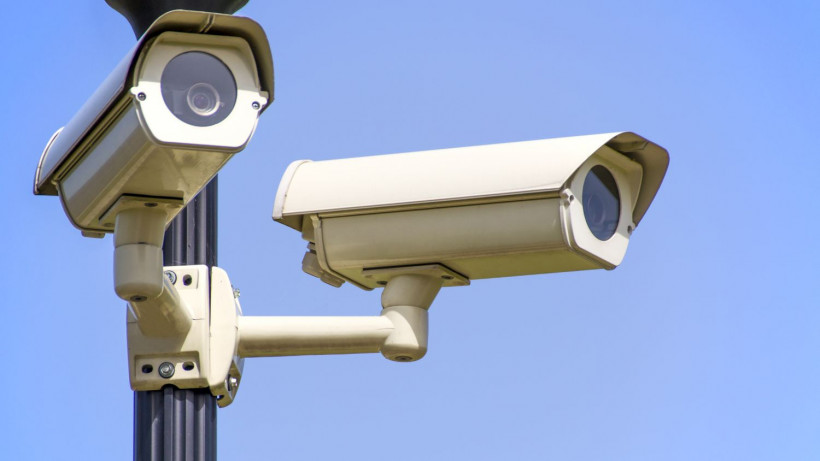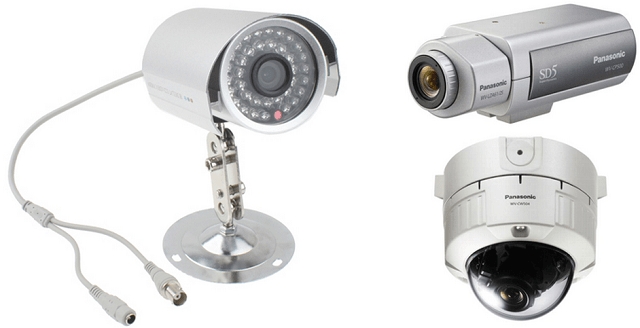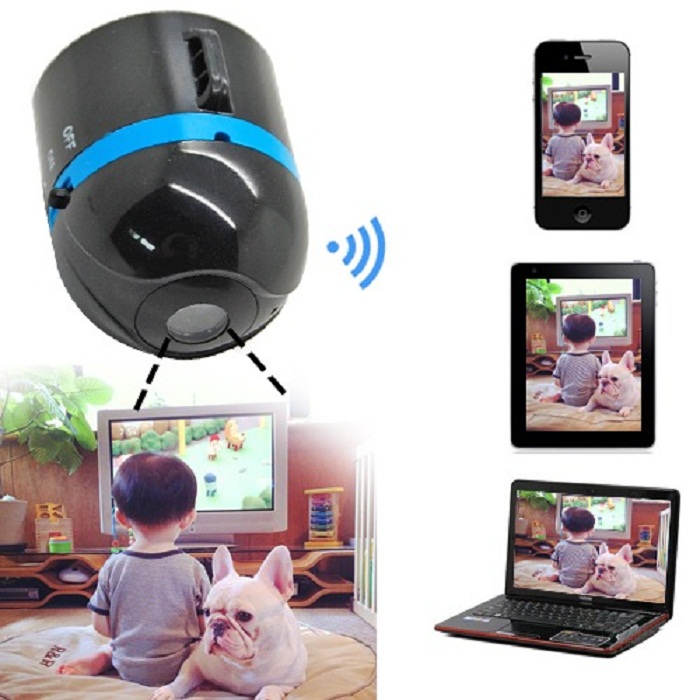Any digital video camera requires a power connection to operate. Signal transmission also occurs via wires. PoE power supply for IP cameras has been developed to reduce wiring costs and convenient connection. There are several types of connection that you should learn about before purchasing equipment and starting installation work.
- PoE technology concept
- Method advantages
- Disadvantages of the method
- Varieties of PoE power supply for cameras
- PoE Power Principle
- Definition of connection
- Device classification
- Full supply voltage supply
- Power off
- Connection standards
- Camcorder Connection Methods
- PoE power options
- Power supply for digital cameras without PoE
PoE technology concept
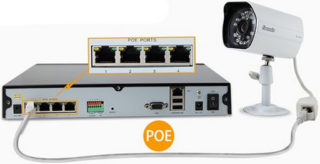
The abbreviation "PoE" is derived from the first letters of the words of the English expression Power over Ethernet, or power over a local area network.
To supply voltage to the cameras, a single PoE cable for video surveillance is used, along which the video signal is also broadcast.
PoE power is used in IP telephony (VoIP phones), the creation of local networks in private homes and enterprises, when connecting devices connected to a Wi-Fi network.
Method advantages
Using a common cable has several advantages:
- the cost of purchasing connecting wires is reduced;
- installation work is simplified;
- the cameras do not need power outlets and power supplies at the installation site;
- electrical safety is ensured by the voltage level passing through the twisted pair (up to 48 V);
- centralized control of the operation of all connected devices and emergency shutdown are carried out;
- the appearance of the premises deteriorates less.
The use of a twisted pair cable simplifies the fight against induced voltages and reduces the effect of electromagnetic interference due to the structure of the wires with different twisting pitch.
Disadvantages of the method
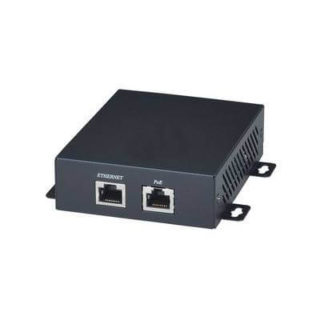
With a wire length of more than 100 meters, the resistance of the wires increases, therefore, the voltage across the camera drops. Doing so may turn off the equipment.
PoE equipment is more expensive, which entails increased financial costs for the purchase of video recorders or routers for broadcasting the signal to the network.
The maximum power of the equipment in one channel cannot exceed 15 or 25 W for the most common IEEE 802.3af and IEEE 802.3at standards. This imposes a limitation on the choice of devices. The criterion is important for outdoor cameras that consume additional energy for infrared illumination and heating in the cold season.
For recorders, you will need a powerful power supply, which is also more expensive than analogs.
When selecting equipment, it is necessary to select models of cameras and recorders that support the connection standard.
Varieties of PoE power supply for cameras
There are two ways to connect.
In the first case, the voltage is supplied through the twisted pair wires that are not used for transmitting the video signal. For this, there are 4 free conductors in the cable.
With phantom power, both voltage and signal travel through the same pair of wires. High frequency transformers installed on both sides of the UTP cable are used to isolate and prevent interference.
PoE Power Principle
- determining the availability of equipment;
- device classification;
- supply of operating voltage;
- power off.
Each step allows you to identify the malfunction of devices, reduce power consumption, and reduce system breakdowns.
Definition of connection
At the first stage, the PoE power supply supplies a voltage from 2.8 to 10 V. The input resistance of the connected device is calculated from the flowing current. If the parameter is in the range of 19-25.6 kOhm, the device proceeds to the next step.
In the absence of a "response" voltage is not supplied to the wire.
The process repeats after a given period of time.
Device classification
At the testing stage, the power consumption of the video camera is determined. A voltage of 14.5 to 25.5 V is applied to the wire and the current is measured.
If the parameters are exceeded, the power from the camera is removed. Also, the voltage supply is interrupted if the current is less than the parameters specified by the standards, which may indicate a camera malfunction or a cable break.
Power classes of equipment with PoE connection:
| Class | Max. power per channel, W | Connectivity standard |
| 0 | 15,4 | 802.3af |
| 1 | 4 | 802.3af |
| 2 | 7 | 802.3af |
| 3 | 15,4 | 802.3af |
| 4 | 30 | 802.3at |
| 5 | 45 | 802.3bt |
| 6 | 60 | 802.3bt |
| 7 | 75 | 802.3bt |
| 8 | 90 | 802.3bt |
Based on the measurement results, the camera is assigned a power class from 0 to 8. The parameter is saved in the settings of the power supply device. During further operation, if the permissible values are exceeded, the power supply is interrupted.
Full supply voltage supply
After determining the class of the device, the supply voltage of 48 V starts. The level rises gradually over 400 ms.
During the work, the consumer's work is continuously monitored.
Disconnection occurs when the current is less than 5 mA, more than 400 mA, and also if the total resistance of the line and receiver exceeds 1980 kOhm.
Parameter changes may indicate accidents:
- short circuit;
- line break;
- malfunctions of the camcorder.
Each of the options can uncontrollably cause a sharp surge in current, which is prevented by a power outage.
Power off
If, within the time specified by the standard, the power supply device notices that the camera is disconnected from the mains, the power supply to the line is cut off until the connection is restored.
Connection standards
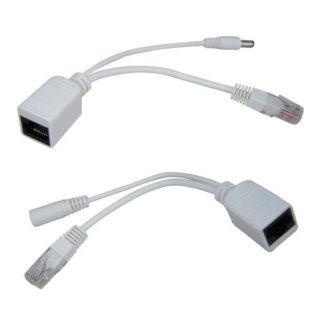
When buying, pay attention to the standard by which the PoE camera is connected.
Three types are common:
- IEEE 802.3af (Roe) - characterized by the transmission of direct current with a nominal voltage of 48 V. Depending on the composition of the equipment, the parameter can vary from 36 to 57 V. The maximum current is 400 mA, and the power should not exceed 15.4 W for each channel. Both signal-free pairs are used for transmission.
- IEEE 802.3at-2009 (Roe +) supports device power up to 25.5W. In this case, the voltage for the surveillance cameras is also supplied via 2 pairs of wires.
- IEEE 802.3bt (Poe ++ or 4PPoE) is a new standard that uses all 4 pairs of UTP cables of the fifth category to supply current. The maximum power of the receiver is 90 W.
Each of these standards is active - when connected, all operations go through: connection, class definition, voltage supply and disconnection.
There is a variation called passive PoE. In this case, no polling is carried out, the power supply is directly supplied to the receiver from a separate power supply unit. It should be borne in mind that passive PoE will not protect equipment in emergency situations.
Camcorder Connection Methods
Digital cameras are connected in two ways: with the use of PoE technology and without it. It is considered optimal to use compatible hardware.
PoE power options
There are several schemes for organizing PoE connections. The composition of the equipment depends on the configuration of the facility.
If the distance between the DVR and the IP camera does not exceed 100 meters, the equipment is directly connected with a UTP cable.
The standard Cross-over (zero-hub) pinout of 8-pin RG-45 connectors is used.
| Contact No. | Wire color | Signal type |
| 1 | White-orange | Rx + network |
| 2 | Orange | Rx network– |
| 3 | White-green | Tx + network |
| 4 | Blue | + DC 48 V |
| 5 | White-blue | + DC 48 V |
| 6 | Green | Tx network - |
| 7 | White-brown | –DC 48 V |
| 8 | brown | –DC 48 V |
The recorder and camera must support PoE technology.
A distance of more than 100 meters will require the purchase of additional equipment. PoE repeaters are capable of extending the transmission line by 100 m. For distances from 300 to 500 meters, VDSL2 converters are used.
If the power of the ports of the recorder is not enough, PoE-injectors and splitters are used to power the video cameras.
The injector is installed at the location of the registrar or router. The device has connectors for connecting an external current source, "LAN" for connecting a recorder and "PoE" for a UTP cable.
A splitter is mounted on the side of the video camera. A cable from the injector is connected to its input. The device also has two outputs: "LAN" for receiving video signals and a camera connection.
Power supply for digital cameras without PoE
In this case, additional devices are used - splitters, which have three connectors:
- power connection;
- LAN connections;
- connecting UTP wires.
Splitters belong to the class of passive devices, since they only combine individual wires into one cable. There is a junction box inside the device to ensure correct wiring.
The device allows you to do without cutting and soldering wires, which is important for using outdoor video cameras.
PoE technology for connecting remote digital video cameras significantly reduces network installation costs. If all the rules are followed, no additional hardware setup is required, the camera will immediately start broadcasting.

